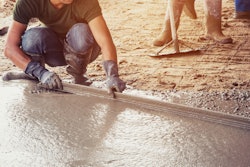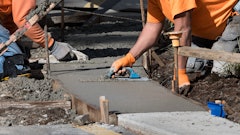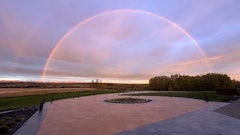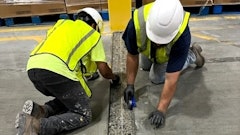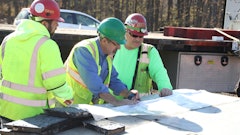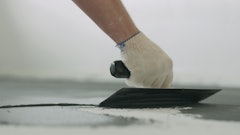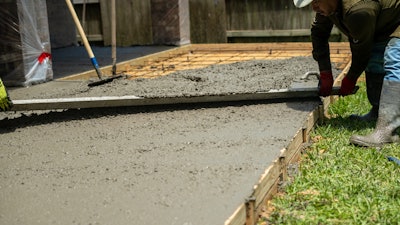
- The global decorative concrete market is anticipated to reach more than $23.8 billion by 2026 (annual valuation)
- The concrete patio market is anticipated to grow at about 7% CAGR through 2026
- Decorative concrete market players have shown an attraction towards polished concrete
Major selling points for decorative concrete among contractors tend to hover around durability, customization, strength, environmentally friendly, and aesthetic attributes. Contractors have exhibited an inclination for cost reduction of using concrete or products stemming from such material. Decorative concrete market players are buoyed by the trend for architectural expressiveness in the construction industry.
With the use of stamps, dyes, stains, white cement, color pigments, ornate sawcuts, textured patterns, and epoxy overlays becoming more palpable, decorative concrete has become the linchpin and a lucrative business portfolio with which facilities and homeowners can boost the value of their properties. What’s more, several contractors are not shying away from using the go-to concrete in their construction projects—decorative concrete has expanded its consumer-base to convert the simple cement slabs into designer flooring.
It has been anticipated that the global decorative concrete market size will reach more than $23.8 billion by 2026 in annual valuation. Stamped concrete has come on the horizon as an innovative product prevalently used for the floor in patios to propel strength and provide a compelling appearance.
Contractors observe this as affordable landscaping that needs less maintenance vis-à-vis other materials. Stamped concrete, also dubbed “imprinted concrete” comes with an ocean of color and pattern options and mimics stones, including tile, slate, flagstone, making it trendier in entries, courtyards, and pool decks of the residential buildings.
From patios and counter-tops to specialty gardens and malls to stone walls and driveways, stamped concrete has become a versatile and natural fit for value addition. Not only does the concrete provides a decorative touch, but it also offers other real benefits, such as sustainability and increased longevity pertaining to aesthetics, cost savings and performance.
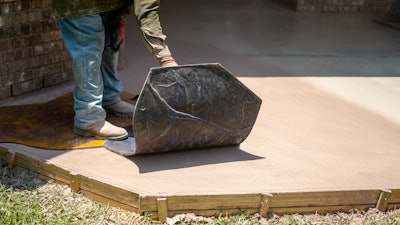 Global Market Insights Inc., has projected that the share of the decorative concrete market from application in patios will grow at a healthy compound annual growth rate of around 7% through 2026, mainly attributed to the versatility of stamped concrete.Adobe Stock Photos | By Bobcat Beasley
Global Market Insights Inc., has projected that the share of the decorative concrete market from application in patios will grow at a healthy compound annual growth rate of around 7% through 2026, mainly attributed to the versatility of stamped concrete.Adobe Stock Photos | By Bobcat Beasley
Concrete Patios is Here to Stay
Stamped concrete is not averse to downsides as harsh chemicals, oil spills, sharp objects, and hot tires may mar the product quality. That said, stamped concrete has become one of the most highly sought-after concretes to maximize return on investment through customization, performance, quick installation, easy maintenance, and durability. Global Market Insights Inc., has projected that the share of the decorative concrete market from application in patios will grow at a healthy compound annual growth rate (CAGR) of around 7% through 2026, mainly attributed to the versatility of stamped concrete.
Stamped concrete is not averse to downsides as harsh chemicals, oil spills, sharp objects, and hot tires may mar the product quality. That said, stamped concrete has become one of the most highly sought-after concretes to maximize return on investment through customization, performance, quick installation, easy maintenance, and durability.
Patios are making headway in residential and commercial spaces, thanks to the growing footfall of stamping tools and color techniques. Why?
In short, money. Concrete patios are gaining immense popularity as a versatile and low-cost material that can withstand hostile weather to boost durability. Concrete contractors have shown an inclination towards decorative concrete patios following the trend for al fresco dining and entertainment areas. Customers demand skid-resistant and hypoallergenic areas. This is where concrete patios can be a great fit: durability, safety, and low maintenance have made the material a strong value adder in the ecosystem.
Decorative concrete walls will provide revenue-boosting opportunities for contractors with creative design, attractive colors, appealing texture options, and maximum durability. In stark contrast to wood or acrylic walls, decorative concrete walls are innately designed to resist hostile environments.
The construction process for the decorative walls will incorporate, installing form liners inside the forms, setting the forms and staining the concrete to look like masonry or stone.
Contractors are Buoyant
With an ocean of options available, decorative concrete has come up as a viable concrete flooring solution as polished concrete floors continue to gain popularity in corporate office buildings, retail stores, and LEED-certified buildings.
With surfaces such as colored concrete, honed concrete and exposed concrete being used in an aesthetic way, decorative concrete manufacturers are likely to rely on growing construction activities. According to Global Construction Perspectives and Oxford Economics, global construction industry will be pegged at US$17.5 trillion by 2030—around 57% of the growth to be witnessed in China, the U.S. and India.
Gradual yet bullish growth in infrastructure, homes and workplaces will generate benefits for contractors that will go beyond economic growth. An upsurge in investment in construction industry will have a positive influence on decorative concrete market revenue growth. The opportunities in stamped- and polished- concrete underline the pivotal role that concrete contractors will play to ensure customer interest is best served.
Polished Concrete, Cost-Effective Flooring Option?
Conventional flooring systems are replete with downsides, including hydrostatic pressure, dusting, coating failures, downtime during installation, delamination and high maintenance. Decorative concrete market players have shown a traction towards polished concrete to gain a competitive edge in the landscape.
Polished concrete flooring has hit the sweet spot in terms of longevity, durability and abrasion resistance. Stakeholders, including project managers and concrete contractors are buoyed by the fact that polished concrete is LEED friendly and can leverage the concrete to hold indoor temperature longer. This kind of concrete wards off additional materials, such as coatings and contains no pronounced VOCs, thereby making it a lucrative material for sustainable buildings in the LEED Green Building Rating System certification process.
Dry-mechanically polished concrete can be put into service instantly following the completion of the process. Besides, the upsides of mechanically grinding propel the coefficient of friction and boost slip resistance, while it also transforms a porous concrete floor to repel oil, water and other contaminants. With polished concrete warranting minimal maintenance as compared to other flooring systems, concrete contractors perceive the material as a cost-effective flooring option.
It is pertinent to mention that polishing leverages rejuvenation of old concrete and acknowledges sustainable design attributes. When it comes to existing buildings, this concrete minimizes the impact of construction by recycling an old floor. Meanwhile, polished concrete uses non-toxic components, including water-based hardeners for new or old buildings.
Polishing has become prevalent for refurbishing old concrete flooring and introducing low-maintenance, durable and high-gloss installation. Decorative concrete market outlook will remain robust on the heels of impressive demand for polished concrete noticeable in industrial buildings, warehouses, public buildings and retail stores.
Find more analysis on the global decorative concrete market at the GM Insights website.







